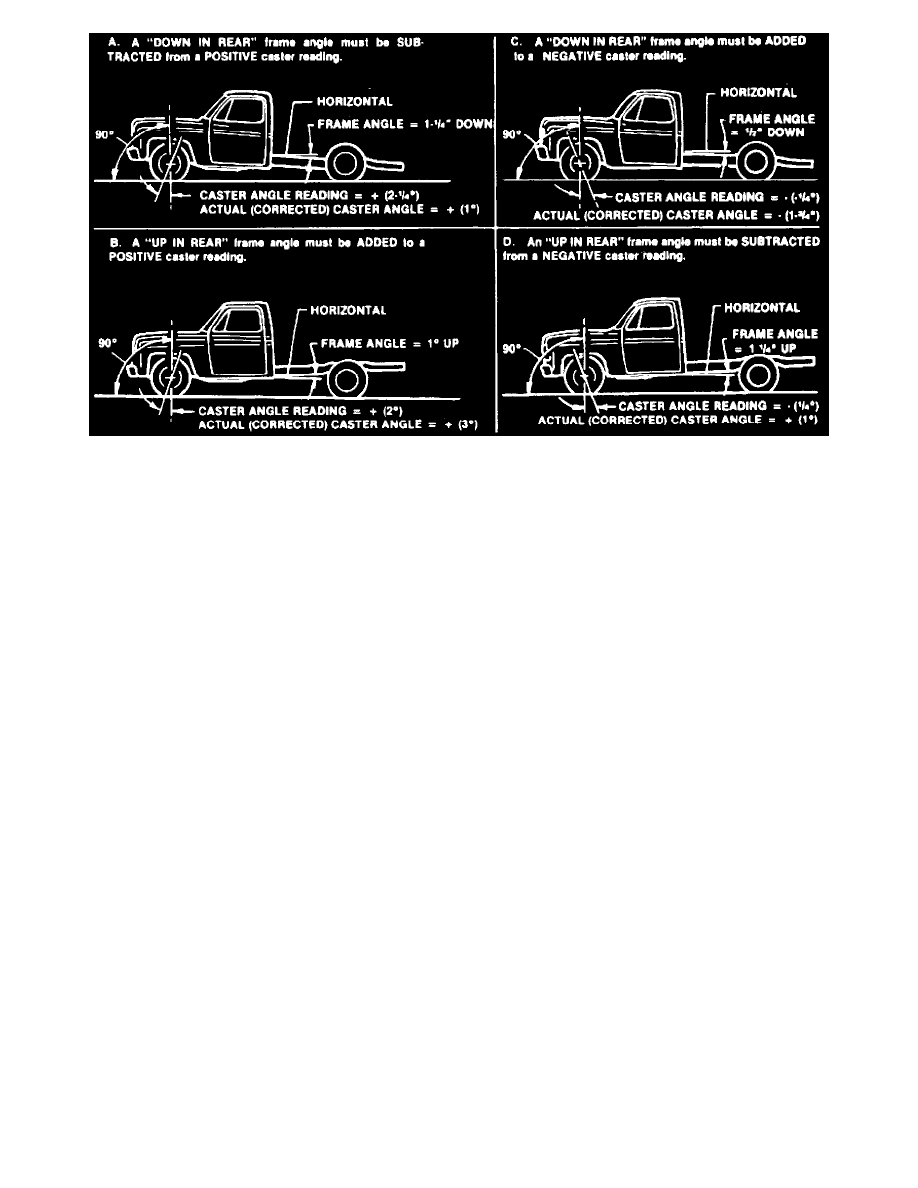K 3500 Truck 4WD V8-454 7.4L VIN J SFI (1996)

Caster Measures
CAMBER
1. Determine the camber from the alignment equipment.
2. Install adjustment kit No. 15538596, or equivalent.
3. Reset camber to specifications.
CASTER
All caster specifications are given with the vehicle frame level (zero angle).
1. Position vehicle on a smooth level surface.
2. If necessary, correct "Z" height.
3. Using a bubble protractor or inclinometer, measure frame angle,
Figs. 1 and 2.
4. Note frame angle as being up in the rear or down in the rear.
5. Determine caster angle from alignment equipment.
6. Determine actual (corrected) caster reading, Fig. 2.
7. When measuring caster, note the following:
a. A decrease in rear frame angle must be subtracted from a positive caster reading.
b. An increase in rear frame angle must be added to a positive caster reading.
c. A decrease in rear frame angle must be added to a negative caster reading.
d. An increase in rear frame angle must be subtracted from a negative caster reading.
8. If the caster angle is incorrect, correct the caster angle by turning the adjustment cam bolts.
Front Toe Adjustment
1. Determine toe-in from the alignment equipment.
2. Change length of both tie rod sleeves to effect a toe change.
3. Toe-in can be increased or decreased by changing the length of the tie rod ends. A threaded sleeve is provided for this purpose. When the tie rod
ends are mounted ahead of the steering knuckle they must be decreased in length in order to increase toe-in. When the tie rod ends are mounted
behind the steering knuckle they must be lengthened in order to increase toe-in.
